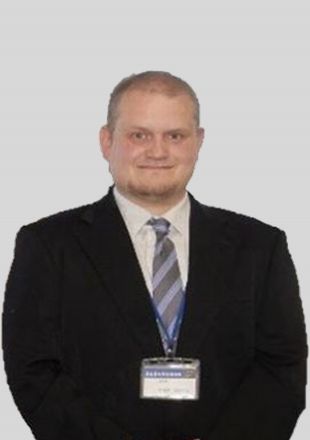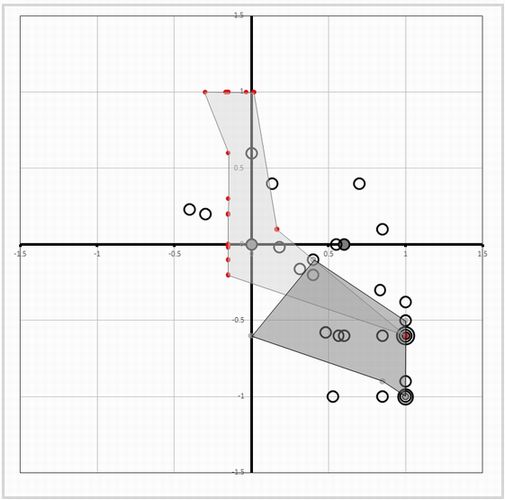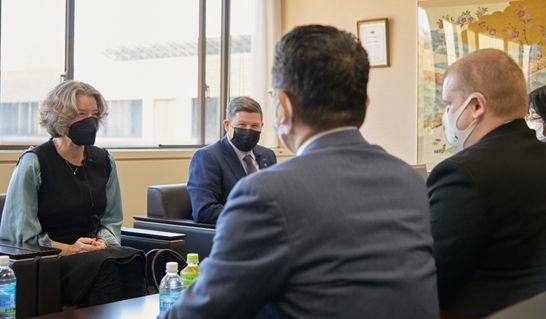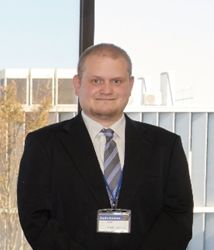Interview with Liberal Arts Communicator Joachim Alt

The National Institutes for the Humanities (NIHU) has been conducting research on human cultures from diverse angles to understand how individuals as well as nature and humans can harmoniously coexist with each other. To that end, we believe it is critical to facilitate communication between the researchers at the forefront of research and society.
As part of this effort to enhance such communication, NIHU holds various events for the general public and also provides training programs for liberal arts communicators who facilitate and engage in “two-way communication” between experts and non-experts. Who are these “liberal arts communicators?” What kinds of activities do they engage in? We will answer those questions in a series of articles.
The 9th article in this series is about Dr. Joachim Alt at the National Museum of Japanese History (Rekihaku). Entering already his 13th year of living, studying, and working in Japan, Dr. Alt took on his new position as Liberal Arts Communicator at the Rekihaku in October 2022. In this interview, we asked him about his research and his work at the Rekihaku.
Could you please tell us about your way into studying at a Japanese university, your advancement into graduate school and your encounter with your research topic?
During the summer of my second year of high school, I had some severe medical issues, which to this day have left me with a handicap in my right arm and leg. At that time, while being hospitalized, I tried to study Japanese with a self-study course from the library. Even though I wanted to enroll in Japanese Studies after graduating from high school, the limitations of the German educational system did not leave me with that option and I instead enrolled in the Business Administration course of a local university that also offered Japanese language classes. However, until my junior year, I never had the chance to take any of the Japanese classes and so it was during my time as an exchange student at a university in the United States that I finally could pick up studying Japanese in earnest. Yet, after returning to Germany, I had to drop out of college. After discussing my options with friends and acquaintances, I decided to try studying in Japan. To get there, I continued to self-study Japanese, while working in different part-time jobs to scrape the necessary money together. In September 2010, I at long last made it into Ryukoku University’s Japanese Culture and Language Program (JCLP).
During my time at Ryukoku, there were two major events that eventually connected to my current research. Number 1 was a consultation with a Ryukoku faculty member, who was a graduate of Hokkaido University (HokuDai). At this point, I already knew that I wanted to work with Japanese animation (anime)and so the advice I received was to maybe consider graduate school at HokuDai. The second event came in July 2013, after I had graduated from the JCLP and transferred into Ryukoku’s Department of Intercultural Communication – the release of Studio Ghibli’s Kaze Tachinu (The Wind Rises). In 2014 I advanced into a Master’s course at HokuDai, but to my surprise, there were no researchers who focused on anime. But in yet another consultation, one professor of my graduate school’s Tourism department, Takayoshi Yamamura, who researches places of anime-pilgrimages, pointed out that, starting with Kaze Tachinu, researching anime and war might be worthwhile, as at the time there was only very little academic attention on for example Kaze Tachinu. I was readily convinced.
Would you outline your research?
Broadly speaking, my research focuses on how exactly media contents in a mutually influential relationship between culture and society shape the everyday life and identities of people. Being a bit more precise, in my Master’s thesis I looked at the depiction of the atomic bombings of Hiroshima and Nagasaki in anime and from there on developed my research to analyze how the (Japanese) “experience” of World War II in general is being represented in anime, and how this representation can be connected to the idea behind Benedict Anderson’s Imagined Communities: Reflections on the Origin and Spread of Nationalism (1983). That is to say, I am not working with titles that are interpretative fiction or allegories, such as Uchū Senkan Yamato (Space Battleship Yamato), but with those that try to more or less realistically depict the war as a historical event. In other words, abroad (and especially in English-speaking countries), Japan’s “victim mentality” about the war is often criticized, and anime are being considered to reflect this victim mentality. However, even in academic discussions, there are hardly any mentions of titles other than Hadashi no Gen (Barefoot Gen) or Hotaru no Haka (Grave of the Fireflies). Here, I first want to confirm whether the “genre” of war related anime that spans more than 50 titles actually reflects a victim mentality, and presuming it does, I want to look at the “victimhood” in anime as what Jan Assmann calls the “formation” of collective memory - as such, a basic factor of memory that ‘all’ Japanese people share. Through this shared ‘memory’ of all Japanese having been “victims,” which of course differs from reality, then, an (imagined) community of “victims,” called the “Peace Nation Japan” can be constructed.

The Matrix Model, an original analytical tool that at the time of Dr. Alt’s dissertation’s submission in June 2020 contained 32 anime titles
the X-axis combines “time/place” and:”victims”,
the Y-axis represents “aggressors” and “the enemy.”
The further to the left on the X-axis a title is located, the further its story includes events prior to 1945 and places outside of the Japanese mainland, while simultaneously showing non-Japanese victims. The further down on the Y-axis a title is located, the more clearly the anime shows factions that are not the Japanese military as the ones attacking civilians, whereas the enemy relative to the protagonist is being shown as non-human. (Joachim Alt, “Collective Memory of World War 2 in Japanese Animation - Mapping out Places and the Enemy, Victims and Aggressors,” PhD diss., Ryukoku University, 2021: 222, Fig. 041.)
As is easy to imagine, research that involves at times very graphic images of the war is emotionally straining, so I am currently trying to ‘refresh’ my research by following a project I had already planned as a joint project with a senior student during grad school and, temporarily, look at the representation of amateurism and professionalism of sports in anime.
How did the COVID-19 pandemic influence your research?
By the time the pandemic came into full swing in March 2020, I was already heavily invested in job hunting and I gradually had to tone down research activities anyway. Especially in 2021 I was for the time being mostly concerned with creating some financial stability and during the first semester of the year taught each four 50-minute classes (German) per week at two different high schools, and six 90-minute classes (English and multicultural understanding) per week at one university. This even increased in the second semester, continuing at only one of the high schools, yet with still the six classes at one university, and then another four 100-minute classes (Japanese culture) at another university. In other words, I spent just a little less than 20 hours a week teaching. At the same time, I wrote up to four job applications per week, so that preparing classes was the closest I got to conducting research.
Nonetheless, my previously mentioned research project on sports amateurism and professionalism in anime has been in the making for a few years already and is planned to include fieldwork with athletes of various levels. Being in the right place, I wanted to include the sports teams of the high schools I was working at in this fieldwork, but due to COVID-19 the teams’ practice units got limited, there were multiple occasions of sudden class cancellations, and games and tournaments also got scaled down. At the end of it, I couldn’t make use of this great opportunity.
Please tell us what inspired you to become a Liberal Arts Communicator.
It was one of the open positions that seemed to fit my skills and field of research the most. Thinking especially about the time after COVID-19, I at the time of my application felt that the re-internationalization of Japan would be a major task. Looking back on over a decade of life in Japan that included research on the country’s society and culture, I thought this might be a position where I could help people with my experience.
How is the Rekihaku involved in your research and what are some of your activities, for example in public relations etc.?
Since I just started working here, this is still hard to answer. But of course, my research is connected to people’s view on history and anime are already a part of Japan’s contemporary cultural history. I am not sure if it will be possible to include for example anime in the exhibitions, but I would very much welcome the chance to use the exhibitions to make my research more visible to the public. Beyond that, I am passionate about teaching, so I want to try giving lectures about the Rekihaku’s activities at various universities. And through translations and interpreting, I hope to contribute to international exchange.

(front right) Interpreting for a delegation from Durham University (UK) on November 8, 2022.
How do you want to approach the role of a Liberal Arts Communicator from here on?
I think this overlaps with the previous question, but I really want to introduce people in education to how “history” is affecting our daily lives. To a lot of people, especially the relationship between culture and history is somewhat of a fuzzy concept. Therefore, I want to make use of my position as a Liberal Arts Communicator at the Rekihaku to convey exactly this relationship to people.
Regarding my research, I still have to rewrite my dissertation into a book and in the process will have to update some of its contents. I only recently gained access to an additional 20 titles that may be relevant for my research. But that of course means that the results of my dissertation might change. Thus, I would have to account for that in the writing process and will proceed with this project very carefully.
(Interviewer: OHBA Go, Researcher, Center for Innovative Research, National Institutes for the Humanities)
Joachim Alt
Liberal Arts Communicator, National Institutes for the Humanities (NIHU) Center for Transdisciplinary Innovation; Project assistant professor, National Museum of Japanese History
Originally from Germany, Joachim Alt received his Ph.D. in Intercultural Communication Studies from Ryukoku University through an externally submitted dissertation in 2021. His research combines area studies with studies of culture and representation, focusing particularly on the representation of group identities in Japanese animation. Prior to his current position, he worked as a lecturer, at Yokohama National University, the Tokyo University of Social Welfare and J. F. Oberlin University. He also was in charge of German language classes at two public high schools in Kanagawa Prefecture between 2020 and 2022.

